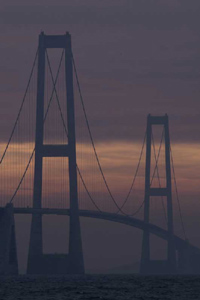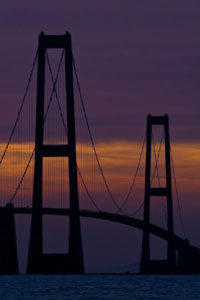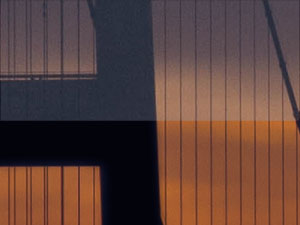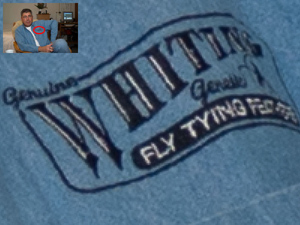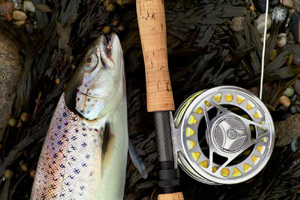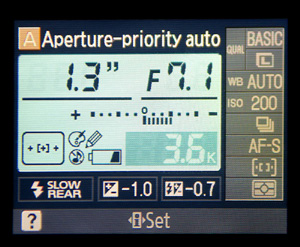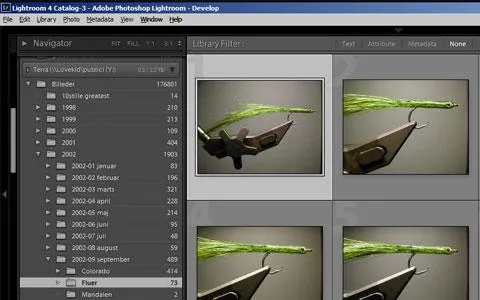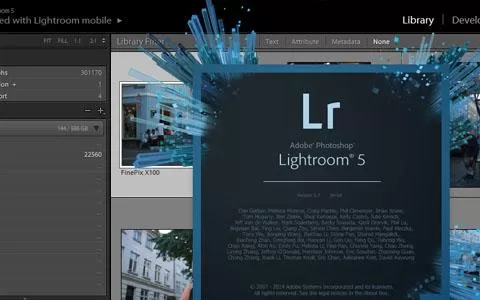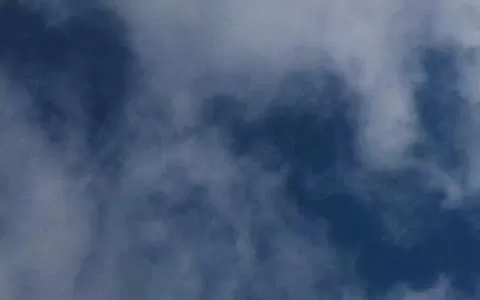There is an ongoing and almost eternal debate on the net about JPG versus RAW. I don't take part in it. I just shoot RAW and here is why.
On my first real digital point-and-shoot camera there was no choice between RAW and JPG. The minute digital machinery shot JPG's and that was what you could choose. And I was complaining about the JPG-quality already back then. All the compact cameras I have owned since then have had the same limitation although most have had better JPG-control. Only the higher end P&S cameras offer RAW, and the choice simply isn't there for most people.
JPG for the present, RAW for the future
But the second digital camera that I bought was an SLR—the Minolta 7D—and that offered RAW as standard. In the very beginning I still shot JPG only and didn't think much about that.
Remember that this was back in 2004, and I didn't know much better. I can see from my archives that I did shoot a few RAW-files the first month or so, but the vast majority of the pictures were JPG only. After having had the camera a month I obviously learned something, and started shooting RAW almost exclusively. I have done so ever since with all my SLR's apart from a few occasions where I have shot both RAW and JPG.
My philosophy is that you shoot JPG for the present and RAW for the future. RAW has some advantages that I will return to, but JPG has some real benefits too:
- in-camera treatment towards instantly better looking images.
- no conversion equals faster post production times (sometimes none) and quick turnaround.
- most cameras can deal with JPG's faster than they deal with RAW. Actually I find that a paradox, but never mind...
- no hassle with programs not being able to read the files. Even the most measly cell phone can display a JPG.
This all speaks strongly in favor of the JPG, but there are still good reasons to shoot RAW.
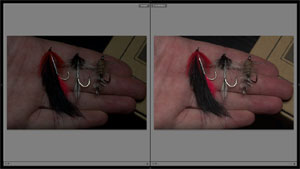
The “digital negative”
Some people have compared the RAW file to the film negative, but I actually take this one step further: I compare the RAW-file to an exposed but undeveloped film with eternal storage life.
True enough: with the negative in hand you can make new prints, and oftentimes get better results (or at least different results) than what might have been the case back when the film was shot, developed and printed.
The same thing goes for a digital picture file. You can work with the original and most likely get better results with new technology and better skills whether you print your pictures or publish them digitally.
Mixing the digital developer
The appearance of the developed film negative is the result of a process and decisions made in the darkroom regarding many things: developer chemistry, times and temperatures in the different fluids, ways of stopping development, fixation of the silver or pigment and more.
In digital workflow decisions have also been made when converting the recorded image data from the sensor into a JPG-file both when conversion takes place in the camera and when it's done one a computer. The decisions include such significant factors as:
- sampling algorithms—how the individual R-G-G-B points from the sensor have become RGB-pixels in the JPG, a process known as demosaicing.
- white balance—once set it can be difficult to change.
- color balance—saturation, hue, color profile. Like the above: easy to set, difficult to change once it's baked into the JPG.
- reduction of dynamic range—the dynamic span of the sensor is mostly larger than what can be saved in a normal JPG.
- sharpening—most cameras sharpen the images before saving them as JPG. Nice to look at but essentially a deterioration or at least a manipulation of the original data. And no, unsharp does not undo the sharpening!
- compression—cameras use an inherently lossy compression system, which will save storage space, but also potentially reduce image quality.
I have written extensively on the technology and the process before.
The potential of the undeveloped film
With the undeveloped film, you can potentially get out details, which have been hidden until the development, and could have been ruined by inadequate handling in the development right after the time of recording. Wrong time in the developer, pollution in the fixation or insufficient rinsing. You name it. Accidents happen.
If you could develop an old film today using the best current methods in a perfect lab, you could get as much out of it as possible and get better results than what might have been done at the time of exposure. If I had some of my exposed film rolls today in a perfect condition, I could most likely get a better result than I got by simply having a pro lab do the development rather than fiddling around in my parent's bathroom as I did.
I know that this is an unrealistic idea, because film will deteriorate, and we will have no idea how it was exposed: maybe it was pressed (underexposed), exposed using a zone-type system or maybe handled in some other strange way, which requires a special development. So with an exposed film you risk ruining the images or at least not getting the optimal result.
Not so with the “undeveloped” RAW file!
Bobby! Should I take 'em to the bridge?
This image of the Great Belt bridge in Denmark is just an example of the supiriority of today's software. The first image was done from the RAW-file with no scrutiny. Standard settings, as shot, wham, bam!
The second one did get some attention and both color, saturation, noise and other things were dealt with. This simply shows that the inherent quality of the image compared to that of a carefully nursed version is worlds apart. This could in essence have been done on a well groomed JPG, but having the RAW did again give me much more leeway in all directions.
Again and again and again...
The RAW file can be developed—converted—again and again and again using different methods every time. You can use all kinds of strange programs, have different people have a go, try again yourself after having honed your skills. Preserve the original RAW-files and you can bring them out years later and try again.
As with my first Minolta 7D MRW-files. Now, seven years later I can open these RAW-images in the latest, state of the art conversion program and reconvert them using whatever technology is presently available. I get results, which are better than what I got when I first handled them in Minolta's own, miserable Dimage-program that came with the camera. sorry Minolta, but it was lousy!
Lightroom, Aperture, Capture One plus a host of other contemporary programs will all handle my almost ancient RAW-files and do a better job with them than any program I could have thought of back in those days.
And when a new and more advanced program comes out in the future, it will very likely also enable me to work even smarter on my old files. New and fancier methods, better algorithms not to mention new styles are bound to come around sooner than we think. Yes, photo fashion changes like skirt lengths. Just look at pictures from a few decades ago.
More details, better colors, more dynamics
When I dive into those old files I can get new details from them. Well, not new as such, because they have been in there all the time. Embedded in the RAW-files are all the details that the sensor originally recorded, saved in 12 bits color depth (for the Minolta. My Nikon's work with 14). In other words: a lot more information than I would find in the same image if I had saved it as a JPG, which only leaves room for 8 bits per color.
I can also change other things such as contrast, exposure, white balance and whatnot. I can prepare them for some hitherto unknown printing process that will bring out all 14 bits of the originals. You never know what comes.
RAW vs. JPG
I have really tried to be fair and objective with this example and dug out two images taken under very similar circumstances more than seven years ago. One was shot as JPG and one as RAW. They were taken with minutes between them using the same subject, same camera, same lens and same exposure: 1/60th of a second f/5.6 and the built-in flash popped for fill. The crops are screen dumps from Lightroom. Editing was done non-destructively in Photoshop. These images haven't been saved in JPG before the absolutely last save for web, and that has been done in the best quality possible. So in my opinion this is as close as I can come to representing what detail was and is in the pictures.
My aim has been to show that the in-camera JPG's actually did come out worse than what I can obtain today from the RAW-file of the same scene.
What you see is a detail of my friend Henning's shirt enlarged to 300% of the original size. You can see on the small insert where the detail is on the full frame. There is a slight difference in exposure between the two shots, but it's not the exposure, which is interesting, but the way the logo on the shirt is rendered.
There is no doubt in my eyes that the RAW is cleaner, sharper and with less artifacts than the JPG. Even the colors seem nicer although I tried to match them. The JPG-compression done in-camera is slightly destructive, and the details lost as well as introduced into the image by the process in the camera will be there forever unless you manipulate the image further, trying to reverse the deterioration.
I might not have had the optimum settings in the Minolta 7D, but my guess is that the way this camera converted JPG's was up to the standard of that day. Cameras may be better today, but essentially a similar process is taking place every time an image is converted to JPG by a camera, and there will always be a potential loss.
The essence here is: by shooting a RAW-image rather than a JPG back then, I have given myself the opportunity to draw out the best possible image today with current tools. Tools may improve in the same way over the next decade, enabling you to create even better final results with RAW images shot today.
One shot HDR
One thing that wasn't really around seven years ago was HDR. The technique was there, the algorithms, the math. But it sure wasn't readily available for humble folks like me. There might have been some odd command line tool available, but today's nifty HDR-programs with nice graphical interfaces, snappy previews and selections of HDR-methods weren't around.
Nowadays every lowly image program sports HDR and the best ones offer several methods of combining different exposures as well as one shot HDR.
Yup, one shot HDR! That means that I can do HDR-versions of my antique Minolta RAW files. Something I certainly hadn't envisioned back then, and something, which is much, much better done on the high dynamic RAW files than on precompressed, color profiled, sharpened JPG's.
Something fishy
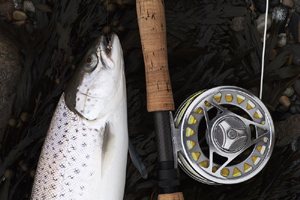
[Minolta Dynax 7D, Sigma 90mm f/2.8 macro, 400 ISO]
This image of a fish and a fly reel is a good example of what a combination of tools, skill and a RAW image can do.
The first image is a JPG made by me from the original RAW back when the image was shot in 2005. It's not a bad image at all with nice details in the dark and no blown out highlights, like in the belly of the fish.
But look at the second version. I made that just 10 minutes ago. Today I have better tools, much better skills (yes, I learned something in the six years that passed!) and also a different taste if you will. I call it a better sense of quality, but it's also a matter of taste.
So in the second version I have managed to get a much more balanced picture with more details in both dark and bright areas and better separation between the different elements. It's also slightly more saturated, but even so more true to life as I remember it.
The things I did to the original to get there would not have been possible with a JPG:
First I made a one shot HDR from three RAW conversions with “fake bracketing” done in Lightroom.
Then I fiddled with the image in Photoshop getting the levels and colors as I wanted.
Last, but not least I made a very dark copy with lots of details in the bright fish, and gently painted some of those details over the basic image.
All this gave me a much more pleasing result that I could not have obtained, had I not had the RAW-file.
No, 3.6k on the display of this camera is not the color temperature in Kelvin, but the number of remaining frames when shooting basic JPG quality with a large memory card! 3600 images is what I shoot in two months. I think I have the time to empty the card in that period... The same card holds more than 450 RAW images on this camera, more than enough to shoot a few hours.
And yes, I know my battery needs charging!
Untarnished for posterity
So all the above just to argue for shooting RAW?
Yep!
Long-winded maybe. Some might find it exaggerated. Some might even say anal. What do I care?
I made up my mind.
There are arguments for not shooting RAW, and recording all your images directly in JPG.
- You may be a sports photographer hooked up wirelessly to a big agency, speeding off images to the whole world seconds after the ball has been hit. JPG's are nice. Ready to roll.
- You may be a wedding photographer who shoots thousands of images during a weekend, and have no time for post production. Well, JPG's print right out of the camera.
- You might be lazy and don't wanna spend minutes watching a progress bar moving while the RAW-data is digested.
- Maybe you are running low on disk space, and only want to store the more compact JPG.
- Maybe you are one of those photographers who like to see a couple of thousand remaining frames in that small display on top of your camera.
Well, I'm neither of the above.
I have plenty of disk space.
Prices on memory cards are plummeting while capacities a going sky high.
I have time to work with my images and computers are just getting faster and faster.
So I'm gonna continue shooting RAW for posterity.
My kids are gonna love me for leaving them terabytes of untarnished RAW files!

